What are the collectable electric guitars of the future? That's the question I put to a select gathering of guitarists, dealers, writers, and auctioneers—including chief editor of Guitar Magazine, the brains behind renowned vintage shops, and one Johnny Marr.
Like any of us, they can see the future only through the lens of the present. But they rallied round and came up with a wide and intriguing set of suggestions, ranging from different takes on familiar brands through to some inspiring modern makers.
Have your own nominees for the collectable guitars of the future? Let us know in the comments.
Overlooked Vintage
LP Signatures, Starcasters, Silvertones, and Kay
Richard Fortus (guitarist, Guns N' Roses) has our first future-collectable nomination, a lesser-known '70s thinline semi.
"In my opinion, the Gibson Les Paul Signature was criminally overlooked," he says.

Richard has two, and he reckons that when a good one comes along it can be a stellar instrument. "My main one is probably my desert island guitar. Whenever I do a session and have no idea what I'm walking in to, I always bring that guitar—it's incredibly versatile and does everything well. Through a cranked Marshall, it is absolutely huge-sounding, with loads of clarity and definition in high-gain situations."
Richard selects two more thinlines for possible future goodness. First is the 1976–80 Fender Starcaster. "I bought mine from Ted Turner of Wishbone Ash—and removed the horrible '70s poly from the neck. The pickups sound fantastic. I know Starcaster values have risen quite a bit over the last decade, but I think they'll go up more over the next 20 years."
Another is the Silvertone 1446, a Harmony-made '60s thinline. "Its pickups were made by Gibson, but they're different than any other mini-humbucker," Richard explains. "Absolutely amazing-sounding and beautiful-looking—not easy to play nor a particularly well-crafted instrument, but it makes up for that in tone and sexiness."
Dave Gregory (guitarist, Big Big Train) picks a further thinline oldie for our next choice, the '60s Kay K775 Jazz II.
"It's already recognized as the guitar Eric Clapton learned to play on," Dave says, "and collectors are starting to seek them out at last."
He notes Kay's poor reputation for quality control, but in Dave's view the Jazz II has several redeeming features, including its laminated figured maple top, back, and sides, Bigsby vibrato, and two "fantastic" Barney Kessel–designed Kleenex Box single-coils. "Jazz guitarists might balk at the sight of a bolt-on neck," he adds, "but set up correctly, the Jazz II is a very naughty guitar indeed."
Supro, Guild, Rickenbacker
Matt Lucas (dealer, Matt's Guitar Shop) also has a soft spot for Kay guitars. "In my opinion, old Supro and Kay guitars are undervalued by many people," he says. "It's a shame, because they sound great, and that's why they're used by many modern artists today."

Chris Vinnicombe (chief editor, Guitar.com & Guitar Magazine) points a finger at numerous pre-'67 Guild models that he reckons are comparatively affordable compared to their Gibson equivalents. "They are excellent guitars in their own right, too," he says. "I know Mr. Gruhn is a fan of the A-500, in particular, but the various Guild semi-solid thinline Starfire models have always ticked the boxes for me."
Johnny Marr (guitarist, The Smiths, solo projects) is well-known as a fan of Rickenbackers, among other guitars, so his future-collectable choice in the hollow electric department is no surprise: specifically, it's early-'80s 330s.
"Neck profile and weight on my '83 330 are perfect," he reports, "and I've tried ones from the late '80s which don't sound as good. Unlike the more valuable 'vintage' models, the sturdy build of the early-'80s model makes the tuning and setup more reliable, which is a big help on a Ricky."
Framus, Welson, Greco, Teisco
Luke Hobbs (auctioneer, Gardiner Houlgate) suggests early, quirky European-made solidbodies as an untapped area slowly starting to receive attention and recognition.

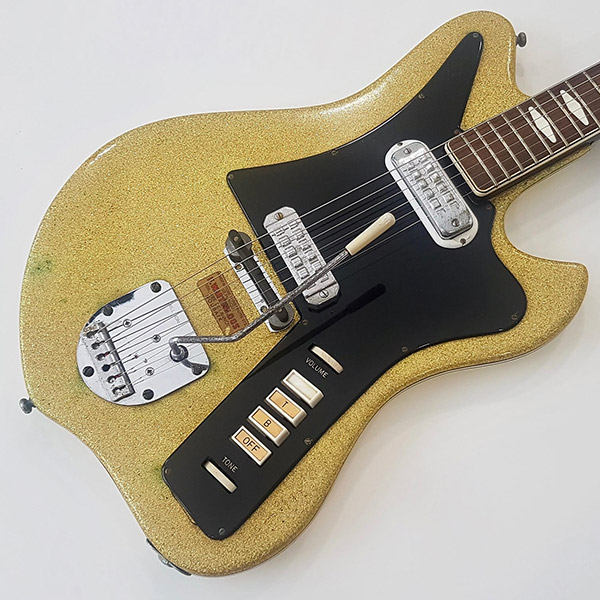
"The '60s German-made Framus Strato de Luxe has fantastic playability—subject to a decent setup—and an almost unique, big sound," he says. "In the last 10 years or so, prices have doubled and appear to keep rising."
Luke also rates the Italian brand Welson. "Again, good quality, quirky designs, mostly not straight ripoffs of the American classics. Prices on these are still considerably low, and I can see them increasing, too."
José Pérez (dealer, Jap-Tone) draws on his specialty and nominates a number of '70s and '80s Japanese guitars as future collectables. "They are not just cheap copies of the American guitars," he says, "but have their own tone and characteristics—and I do prefer Japanese tone."
José says that fans of the well-known Greco brand often narrow their chase to the brand's solidbody Les Paul models.
"I prefer Greco's chambered versions," he says. "Even chambered guitars of the lower-quality models such as the EG-450 and EG-500 can be more than noteworthy guitars after changing a few hardware pieces. They are great guitars, comfortable, with a special sound."

He picks out two more Japanese brands worthy of extra attention. "Gaban guitars were made by Kasuga," José says, "and they are notable: comfortable to play, well-finished, with a strong personality, well-balanced, and a fat sound, including very good pickups. Their ES-335, Les Paul, and Strat models are absolutely recommendable guitars. Also, the Telecaster models by Mann, which have all the good characteristics of the best Japanese brands like Greco, Fernandes, and Tokai. But they are cheaper—if you can find any—with good Maxon pickups and a wonderful, personal Telecaster tone."
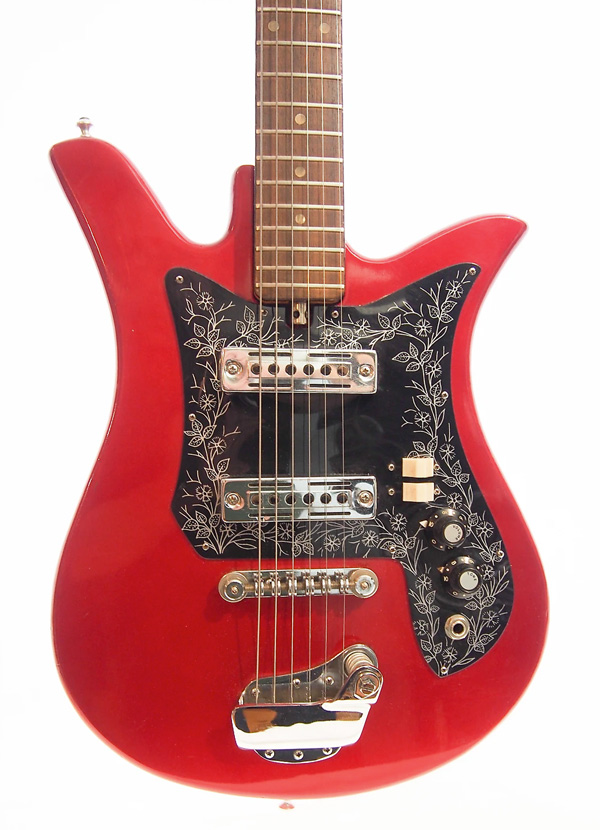
Miss Alex White (guitarist, White Mystery) says her top tip for an overlooked guitar is the '60s Teisco Del Rey ET-200.
"Imagine a magical time when '60s surf guitars were dirt cheap and decorating the walls of every thrift store," she says. "For many, that time is gone—for others, that's when we began to horde mid-century Japanese axes like this one."
Alex describes her own ET-200: "It scorches in candy apple red, with metallic silver flowers decorating a black pickguard. Like most solidbody electrics of its time, the chrome and flair twinkle beautifully. While the appearance is gorgeous, the tone is off the chain. I love the natural chainsaw fuzz that emits from this particular model. Choose between the Bass/Treble or Rhythm/Lead switches and take a wild ride!"
Archtops
Walter Carter (dealer, Carter Vintage Guitars) shows us a graph for the archtop market, with a sharp rise and then, in recent years, an equally sharp drop. "However, unlike the overall vintage market, it never recovered," he says.
Archtops, aka "jazz guitars," are mostly built as acoustics, so they maintain the premium value that goes with hand-craftsmanship—but with a floating pickup (so as not to impede the vibration of the top) they accommodate the overwhelming preference of jazz players for an electric instrument.
"The names that drove this market in the '90s are familiar: D'Angelico, D'Aquisto, and, to a lesser extent, Gibson and Epiphone, plus numerous individual makers," Walter explains.
"Many of these guitars are available today at a fraction of their prices at the peak of the market. There's the risk, of course, that the market may never recover—it was driven primarily by two well-heeled buyers—but these guitars are still considered to represent the pinnacle of the guitar-maker's art."
Newer Guitars Worth Collecting
Aaron Piscopo (manager, Heritage Auctions: Vintage Guitars) thinks Dean is emerging as collectable.
"The early American-made Deans are a testament to American craftsmanship and guitar-building, which started when brands like Gibson and Fender began to mass produce their instruments and used more cost-effective materials and methods," he says. Similarly, he earmarks PRS for future growth, and then switches to some also-ran Fender solids.
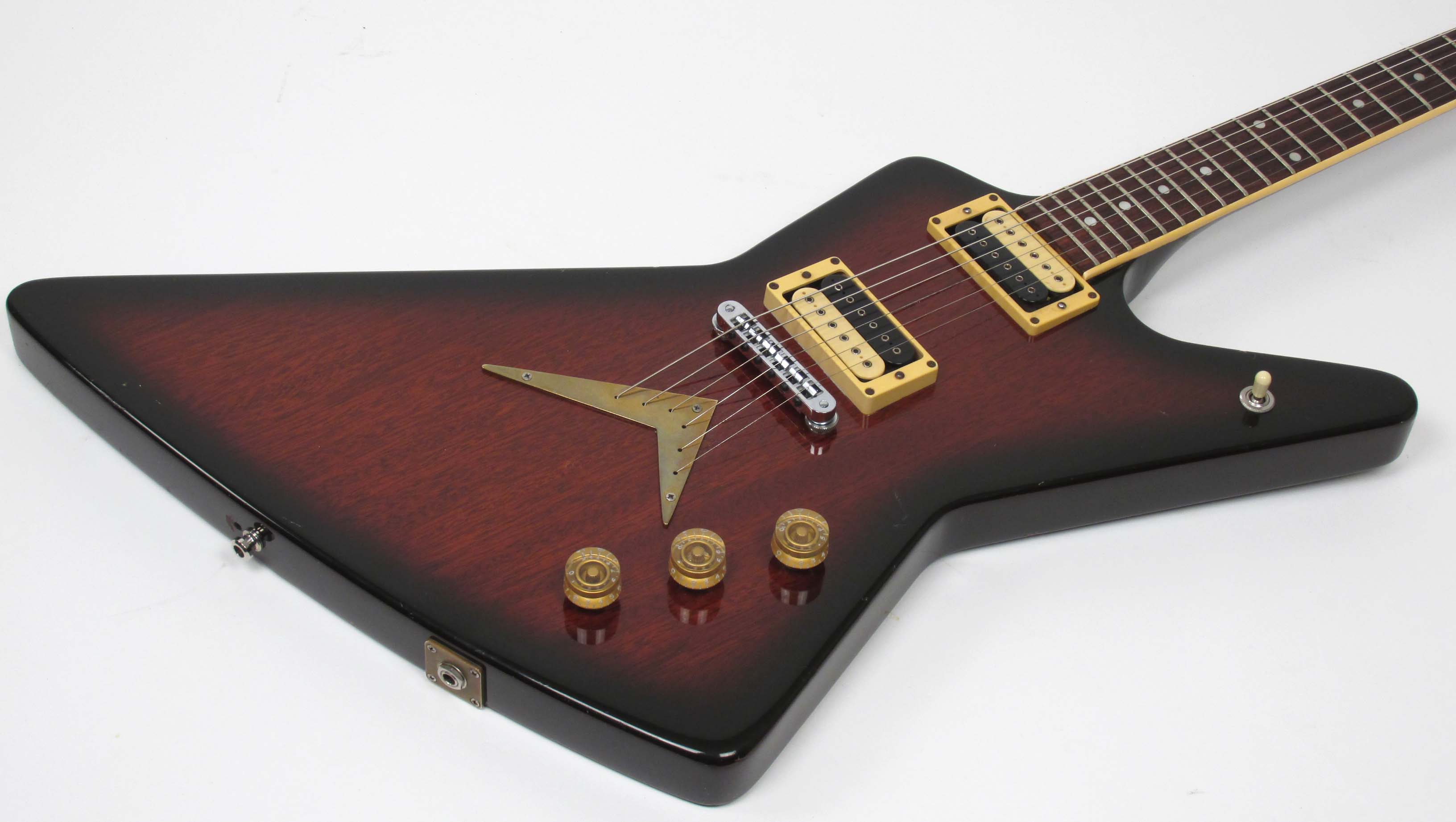
"Kids who grew up on bands like Nirvana, Pantera, Radiohead, Rage Against The Machine, and Primus look up to guys who were not playing a Gibson Les Paul or a sunburst Strat," Aaron says. "The player-grade instruments of the '70s and '80s are becoming more valuable, because that's what the rock 'n' roll heroes of our generation were playing. I hate to say it, but upcoming musicians don't know who Jimmy Page is and what sounds he can make with his Burst. They know Nirvana changed their life and that Kurt played shitty, player-grade guitars like the Mustang or Jaguar."
Johnny Marr adds a particular Jaguar to his list of nominations. Can you guess which model?
"There's no point in false modesty," he says with a smile. "I think my signature Jaguar [introduced 2012] is wonderful and will stand the test of time. It was a challenge to improve on the brilliance of the original '60s design, but I think I got there with perseverance and obsession. I have a lot of beautiful old Jaguars, but when it comes to important gigs and sessions, I always use my signature with the modifications. That says it all, I guess."
Newer Teles and Lesters
Dave Gregory suggests the 1998–2000 US-made chambered Fender Tele-Sonic for future consideration.
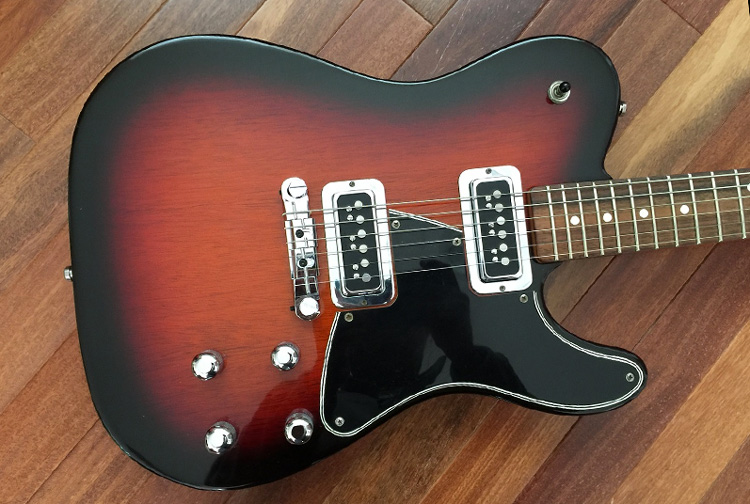
"Equipped with two DeArmond 2K pickups and Gibson-style four controls and selector, it sounds a bit like an adenoidal Tele, without the screeching highs, and a more pronounced mid-range. Its 24.75" scale length and a sturdy, fully-adjustable Tech-Tonic wrapover bridge make it essentially a Gibson Telecaster. It's yet to find any big-name endorsers, but time will tell—it's a brilliant guitar."
How about some off-the-radar Les Pauls? Johnny Marr specifies Standards built from 1983–87. "Well-balanced and with a good neck profile" is his succinct summary. "I've used my beloved cherry '85 for so many records since then," he reports, "although I swapped the pickups out for Seymour Duncans."
Chris Vinnicombe, meanwhile, recommends early Gibson Collector's Choice Pauls. Limited runs in the first place, they're a potential good bet, he reckons, given the enduring appeal of all things Burst and the online community of Lester collectors.
"It feels like the most sought-after Collector's Choice models are as good an under-the-bed investment as any recent production guitars," he says. "I'd also include Les Pauls of the early 2000s from Gibson Custom with Brazilian boards. They are already pricey but almost certain to appreciate further as Braz becomes even more of a premium option."
Walter Carter notes that while Brazilian rosewood is not critical to the performance of an electric guitar, as it is for acoustics, it's a traditional material in limited supply. "That should make that PRS with a rosewood neck or that Les Paul reissue with a Brazilian fingerboard more and more collectable. However, there could be a downside."
Walter also mentions later Gibsons and Fenders. "A decade or two ago, '70s Fenders and Gibsons were simply used guitars," he says. "Not highly regarded, and certainly not considered 'vintage.' However, as the 2000s began, players who started out in the '70s began to look back fondly on those guitars of their youth, and prices started going up. The same thing may happen as children of the '80s and '90s—a period of recovery and renewed quality for Fender and Gibson—start looking back and longing for their first guitars."
Scala, Trussart, Paoletti, and More
Richard Fortus points us to three modern builders that he believes will someday be sought-after in the same way as original Zemaitis and Travis Bean instruments. He says Leo Scala at Scala Guitars is, quite simply, the finest luthier he's found.

"His instruments have the mojo of a vintage item," Richard says. "There is something magical about them. He's making classic-looking instruments, but making simple structural improvements that improve on classic tones. His guitars feel as comfortable and familiar as an old pair of jeans."
Next from Richard is James Trussart. "He's an incredible craftsman who has the perfect balance of incredible aesthetic sensibilities and an ear for fantastic tones. His guitars are so unique and beautiful—nothing else sounds like them."
And last, Paoletti Guitars. At first, Richard thought using 150-year-old chestnut wine barrels for guitars was a gimmick. "But I was wrong. I'd never heard a chestnut guitar before, but Paoletti makes the greatest Tele-style guitars I've ever heard. I've got a '51 Nocaster that doesn't beat them. Plus, they also look amazing."
Mercedes Hernandez (dealer, Guitars West) selects some recent guitars, too, as her potential future collectables. First are the American-made James Tyler Studio Elites made around 2005–08.
"Having grown up in vintage, and with the majority of my knowledge there, I admit that I did not know what I had when I received a very large collection of minty pieces a couple of years ago," she says. With the collection came a handful of these mid- to late-2000s Tyler Studios (as well as some cool non-Studio models).
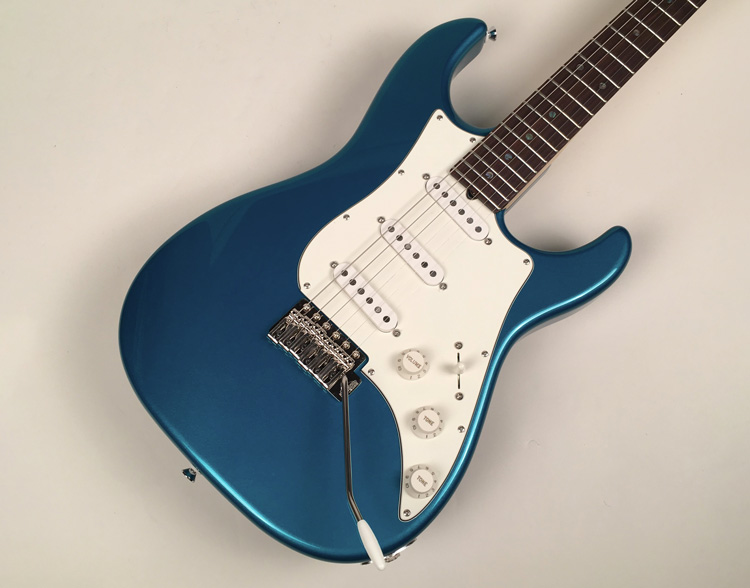
"They were great out of the gate," Mercedes says. "Then I got a call at 6:30 one morning from the tech of Wayne Sermon (Imagine Dragons) telling me that Wayne had to have this particular one. And now! His tenacity made me step back and invest more time into figuring out why. Crow: Devoured. I am now anxious to find more of these in the future—which is not how this journey started!"
The second tip from Mercedes is the Zemaitis Buccaneer Island A24DF Disc Front, aka the Ron Wood model.

"I've been given the opportunity to deal and sell many of these," she says. "Again, the snob in me almost fought the idea of newer pieces, let alone an actual dealership. A couple of years later, and this is one hundred percent a can't-keep-on-the-shelf axe. In my opinion, it's the best model from the rebirth of Zemaitis via Japan. It's obviously not an exact Ronnie config—but let's leave the wall of humbuckers to the man himself."
Finally, and most clearly with an eye to the future, Dave Gregory nominates the guitars of the German designer and engineer Ulrich Teuffel, specifically the Teuffel Niwa. Depending on your view, Dave says, this is either the ugliest guitar ever built or a fully-functional work of art. He thinks the latter, having owned a Niwa for six months. "I'm still discovering what a joy it is to play and to cuddle," he reports. "Everything is so finely and beautifully engineered, it's impossible to find fault anywhere."
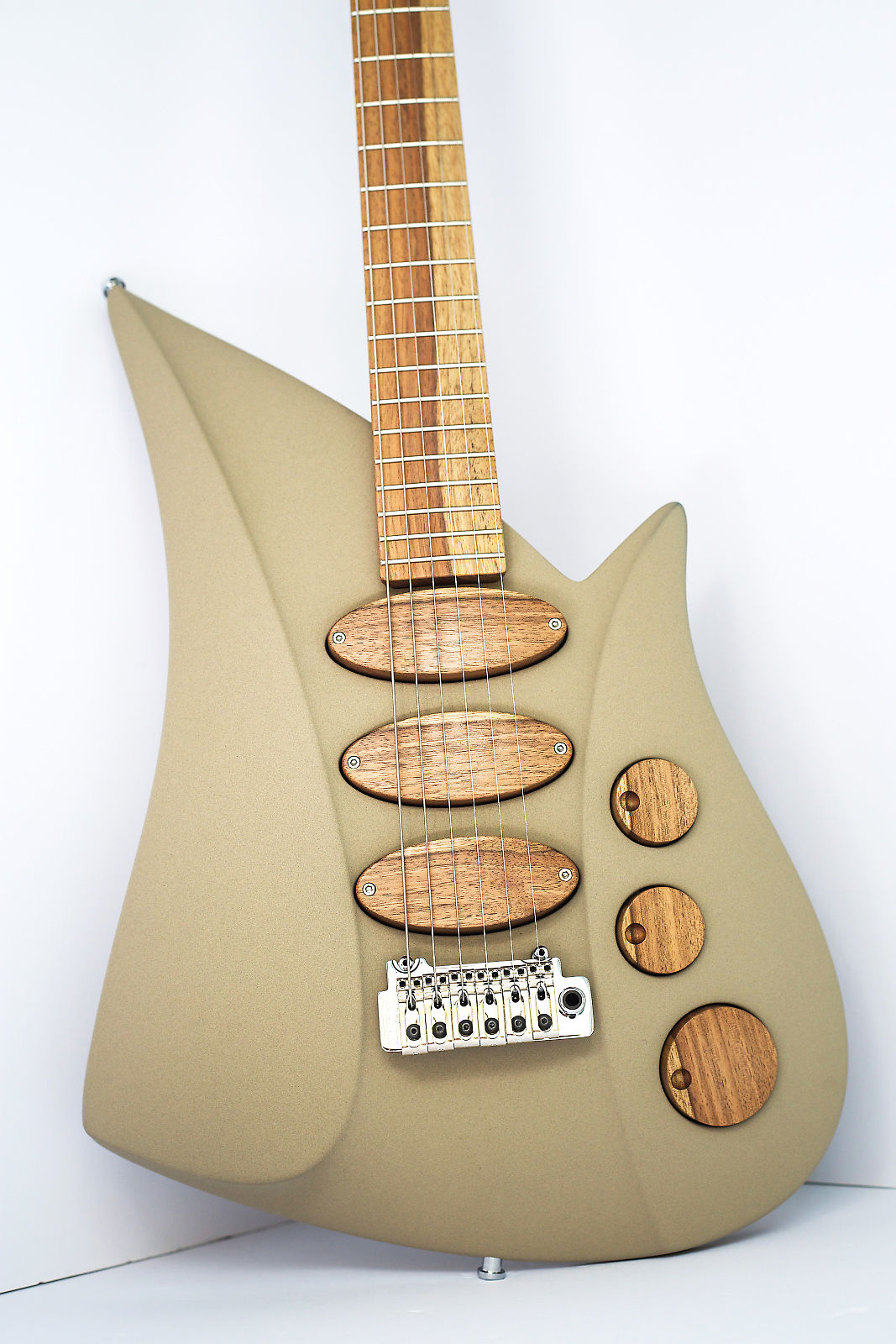
Dave reckons the Niwa has been created with the modern guitarist in mind, and he finds it works best powered with some overdrive love. "The pickups in their natural state are very clean sounding," he says. "The neck is so comfortable you can't let go of it, and there are no flat spots anywhere. Of course, its boutique status makes it extremely expensive, as each one is manufactured to order. I was lucky to find mine used for roughly half the price."
So let's add that oddity to our growing list of guitars that might become future collectables. As Dave concludes: "Who in 1963 could have predicted the eventual popularity and resale value of the Gibson Firebird? I have every faith in the future value of the Niwa, as successive generations of musicians become enticed by its rarity and its quality."
Meanwhile, Dave and the rest of our panel start packing away their crystal balls (careful, now). "A point worth making," he says, "is that any guitars associated with musical legends will always increase in value, regardless of quality. I mean, why else would you want a Hofner violin bass?"
Walter Carter, meanwhile, adds some final thoughts. "I've told customers for years that vintage guitar dealers are just like stockbrokers," he says. "If we really knew what to invest in, we wouldn't still be working as guitar dealers." He pauses, and then adds: "When all is said and done, it's still a crapshoot."
About the author: Tony Bacon writes about musical instruments, musicians, and music. He is a co-founder of Backbeat UK and Jawbone Press. His books include Million Dollar Les Paul, Echo & Twang, and Guitars: The Illustrated Encyclopedia. Tony lives in Bristol, England. More info at tonybacon.co.uk.
